Contents
The cold climate of many regions of Our Country does not allow growing heat-loving grape varieties. The vine simply will not survive a long winter with severe frosts. For such areas, special frost-resistant grape varieties have been developed that can survive at low temperatures. However, even winter-hardy varieties are divided into two categories:
- Covering. A vine of winter-hardy grapes usually withstands frosts ranging from -24 to -27оC. For the winter, bushes in the northern regions have to be covered so as not to be subjected to hypothermia.
- Non-covering. Grapes are able to withstand frosts from -30оC. There are varieties that do not freeze without shelter even at -45оC.
Before you get interested in choosing which grape varieties are frost-resistant and sweet, you need to pay attention to this indicator.
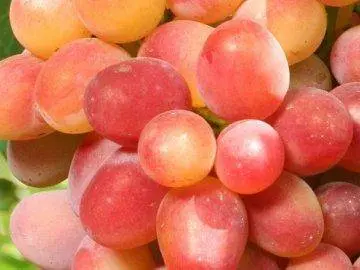
As for productivity, winter-hardy varieties are characterized by abundant fruiting. Here the maximum attention is required from the gardener. During the growth and maturation of the bunches, all the nutrients come to the berries. If there are too many brushes, the vine does not have time to mature, and the root system and wood are left without nutrients. Overloading a winter-hardy bush threatens with a decrease in frost resistance, a deterioration in the quality of fruits, which will lead to the death of the vineyard.
To avoid overloading a frost-resistant bush, normalization allows. In the spring, lashes with frozen buds are cut, during the growing season, extra shoots and brushes are removed.
It must be taken into account that even the most resistant grape varieties to diseases and frosts are endangered by a snowless winter. In an uncovered vineyard, the root system freezes. In the spring, the gardener should not worry about getting a crop, but saving a bush. First, soil is fluffed around the trunk. The vine is removed from the support, twisted into a ring, settled on the ground, fixed with pieces of wire. From above, winter-hardy grapes are covered with a film. Under the greenhouse, the vine will come to life, and new young roots will grow, but they will be superficial.
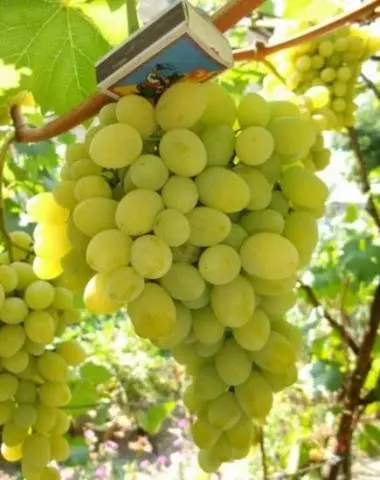
When choosing covering and non-covering varieties of table grapes, a number of important features are taken into account:
- A winter-hardy variety must be resistant to low temperatures, diseases, pest damage;
- maximum juice content in berries;
- low level of bunch structure;
- the sugar content in the pulp is at least 20%;
- maximum saturation of fruits with vitamins and minerals.
All frost-resistant grape varieties 25 and above have a common positive feature – they endure harsh winters. Many winter-hardy vineyards can be grown even in Siberia. A big plus is that non-covering grape varieties are ideal for wine, juice due to the richness of taste and aroma.
The downside is that it’s difficult to maintain. No matter how cold a winter-hardy vineyard endures, some of the young shoots freeze out. Sometimes the superficial root system dies. Winter-hardy grape varieties usually have small, ugly clusters and berries. Most of the crop goes for processing, as it is impossible to eat fresh fruits.
The group of frost-resistant vineyards often includes technical varieties, but there are also table varieties. The scope of culture is extensive. So, frost-resistant grapes, not a sheltered weaving variety, are planted near the gazebo, they equip a hedge, an arch. With a vine, personal plots are planted, shaded places of rest. There are even medicinal varieties of uncovered grapes used in folk medicine. The fruits are used in cosmetology for healing masks.
The video talks about frost-resistant varieties:
Overview of non-covering winter-hardy varieties
All non-covering grape varieties have a common feature – the vine hibernates on a support without shelter. The culture is resistant to diseases, suitable for cultivation in all regions of Our Country.
Isabel
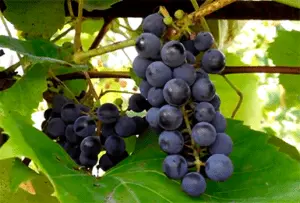
The most popular winter-hardy variety bred since the times of the USSR. Culture loves a temperate climate more, but grows successfully in many regions. An uncovered grape variety is suitable for the Chernozem region, and is most often in demand by winemakers. The fruits are rounded, slightly elongated, about 20 mm long. The dark blue skin is covered with a white coating. The pulp is slimy, sour with a tart aftertaste, but saturated with a pronounced aroma.
Lydia

A good non-covering grape variety for the Krasnodar Territory and other regions with a temperate climate. In the northern regions, the vine is covered for the winter. Berries of a rounded shape become brown-red when ripe. The fruits are famous for their sharp pleasant aroma and are ideal for making wine, juice. Harvest ripening occurs after 150 days.
Sharov’s riddle
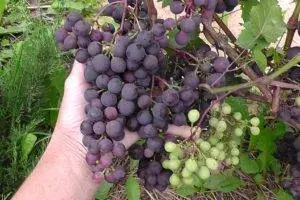
One of the best representatives of frost-resistant grape varieties for Siberia and other cold regions. The vine is able to withstand temperatures below -30оC. Non-covering early large-fruited grapes ripen 3 months after bud break. Berries of spherical shape are not densely located on the brush. The skin is dark blue with a white coating, not sour. The pulp is juicy, sweet. The mass of the brush is about 0,5 kg.
Ontario
A good winter-hardy non-covering grape variety for the Leningrad region and other cold regions was bred by American breeders. The fruits have an ideal ball shape. Clusters weigh about 250 g. Ripe berries become amber in color. Under the sun, the fruit glows so much that you can see the seed. The pulp is mucous, sour-tart. The value of fruits in a sharp pleasant aroma.
Bianca

A winter-hardy non-covering grape variety is well suited for the Urals and other regions with a temperate climate. Berries ripen early. In different sources, there is another name for the frost-resistant variety – Bianca or Bianco. Clusters grow small, weighing up to 100 g. The berries are small, spherical in shape, but very sweet. A winter-hardy variety is considered technical, since the fruits are usually used for the production of table and fortified wines. Suitable winter-hardy non-covering grapes for the Rostov region, as the vine is able to withstand frosts up to -27оC. If the bush froze a little in winter, it will easily recover in spring.
The video provides an overview of Bianca:
Overview of winter-hardy covering varieties
Usually large varieties of grapes are frost-resistant and always covering. The vine can withstand temperatures as low as -27оC. Without shelter, bushes are able to grow in warm regions.
Ataman

A fairly frost-resistant grape variety boasts large berries up to 5 cm long. The fruits are oval, very elongated. The weight of the berry reaches 20 g. Ripe fruits become lilac in color with a purple and pink tint. The peel is covered with a silvery-white coating. The taste of the pulp is sweet. A moderate presence of acid is felt. The brushes grow large. The mass of one bunch reaches 1 kg. Given this feature, it is necessary to harvest the crop in a timely manner in order to prevent overloading the winter-hardy bush.
A frost-resistant variety obtained by crossing Rizamat and Talisman. The clusters mature in about 150 days. Harvesting falls in mid-September. Before winter shelter, the vine is cut and bent to the ground.
Ilya
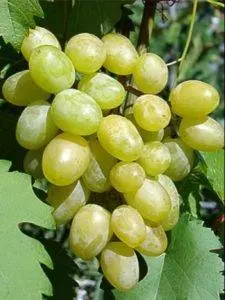
Conditionally winter-hardy grapes withstand frosts down to -24оC. An early frost-resistant variety will please with delicious berries in 110 days. The culture was bred in the process of crossing Wax with Kishmish Radiant. The berries grow large, elongated. Fruit color is light green. In the sun, the skin takes on a golden hue. The mass of the berry is about 20 g. The skin is thin, almost not felt when chewed. The length of the berry is about 3 cm, width – 2,5 cm.
The shape of the bunch is cylindrical, more often cone-shaped. The mass of the brush reaches 1 kg. Berries are grown for fresh consumption.
Cherry
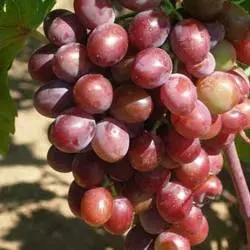
Worthy is the early frost-resistant grape varieties culture with beautiful berries, similar to a cherry. By origin, it is a winter-hardy hybrid obtained from Rizamat and Victoria. The vine can withstand temperatures down to -25оC. Harvest ripening occurs after 110 days.
Bushes of medium height, not sprawling. Frost-resistant culture is rarely affected by diseases. Clusters grow up to 0,5 kg in weight. The berries are round-elongated, densely collected in a brush. The diameter of the fruit is about 2,5 cm. Ripe grapes turn red. The skin is strong, thick, but not rough. The pulp is sweet, not mucous, the flavor of nutmeg is felt in the taste.
In memory of Smolnikov
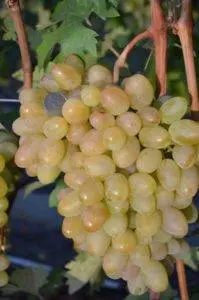
Withstands frost-resistant grapes temperature drop to -24оC. The maturity of the crop is medium early. Berries are ready for use 120 days after bud break. The frost-resistant bush differs in decorative effect. Clusters grow huge, weighing from 1 to 1,7 kg. Berries are yellow-green. The peel is able to acquire a pink tan. In length, the fruit grows up to 4 cm, and the diameter reaches 2,5 cm. The pulp is sweet, acid is slightly felt. Sugar contains at least 20%.
Grape winter-hardy bushes are rarely affected by mildew and oidium. The crop can be transported and stored.
Lemon Donkey
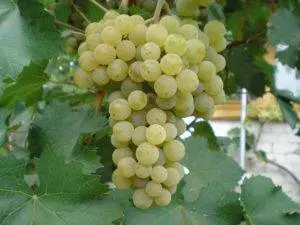
According to its intended purpose, it is considered a variety of frost-resistant technical grapes and is a hybrid. Harvest ripening begins after 130 days. Frost-resistant bushes grow medium in size, the lashes are long and not sprawling. The mass of one bunch reaches 0,5 kg. The berries are tightly packed. The color of the fruit is light green with a golden hue. The skin is covered with white bloom. One berry weighs about 6 g. The taste of the pulp is sweet. The aroma of citrus and nutmeg is felt. The peel is strong, but not thick, easily chewed.
The first harvest is most often used to make Muscat wine. Subsequent ripe bunches gain more sugar. They are used to make dessert wines. In autumn, the vine must be cut, covered, as it cannot withstand frosts below -25оC.
Julian

Of the covering varieties, Julian is considered one of the most winter-hardy grapes. Bushes withstand temperatures down to -25оC. Harvest ripens early: in the south – after 90 days, in the middle lane – after 110 days. By destination, a frost-resistant table variety. Clusters grow large, weighing from 0,6 to 1 kg. Subject to the conditions of agricultural technology, it is possible to grow brushes weighing about 2 kg.
The berries are cylindrical, strongly elongated. On the brush, the fruits are located freely. The shape of the brush is indefinite. One berry weighs about 20 g. In the mature state, the fruits are partially golden and pink. An overripe berry acquires a lilac color. Taste qualities glorified the variety. Crispy when biting, the berry is very tender, juicy. The peel is not felt when chewed. The pulp is sweet with a bright aroma of nutmeg. The thin skin of the wasp is not able to gnaw through.
In Galahad
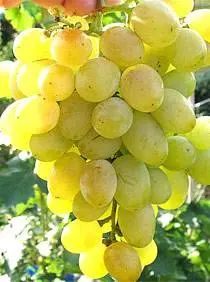
Frost-resistant grapes were bred by a domestic breeder. The vine can withstand negative temperatures up to -25оC. In terms of maturation, a winter-hardy crop is considered early. In the southern regions, the crop is harvested after 95 days. For cold regions, the date of picking berries is removed up to 115 days. On average, the harvest is ready for harvest from the tenth of August. The culture is rarely affected by gray rot, but is sensitive to powdery mildew, oidium, and mildew.
Clusters grow medium in size with a loose arrangement of berries. The shape of the brush from the side resembles a triangle. The fruits are yellow-green in color with a golden hue. On the skin there is a thin wax coating. The fruits are large, elongated, about 3 cm long. The mass of the berry reaches 12 g. The dense skin is practically not felt when chewed. The pulp is sweet, juicy, not prone to cracking. The crop tolerates transportation well. The berries are consumed fresh or put into juice.
Reviews
Finishing the review of frost-resistant covering and non-covering grapes, descriptions of varieties, photos, reviews, it is worth listening to the statements of experienced gardeners.









